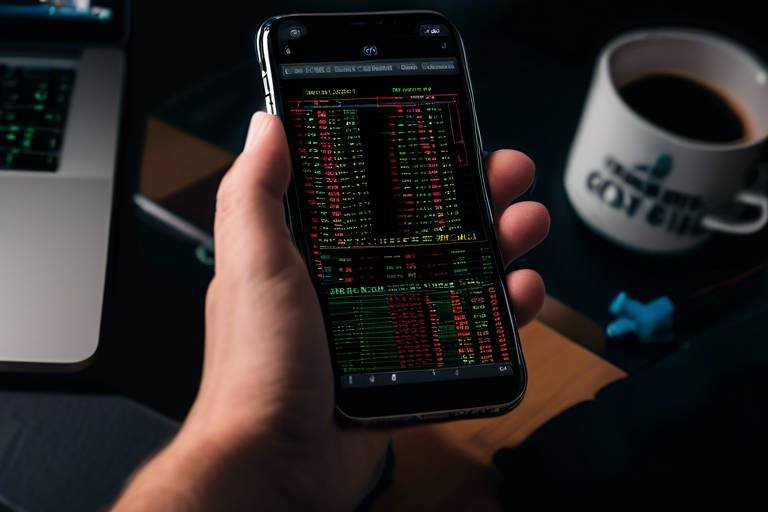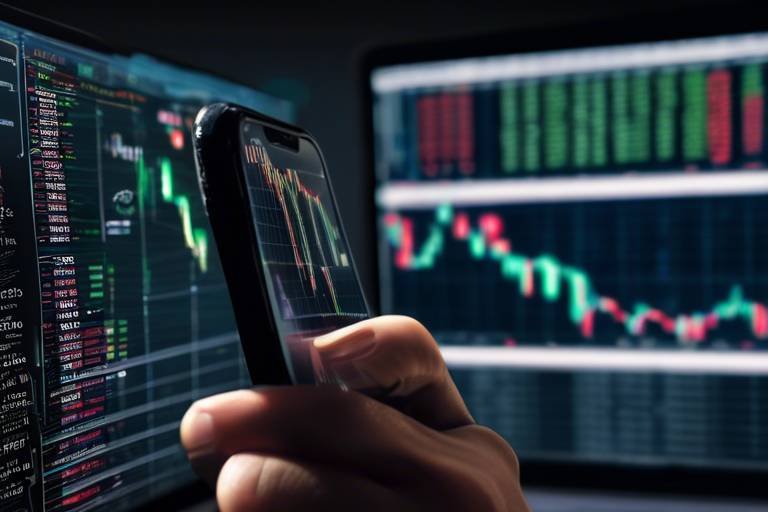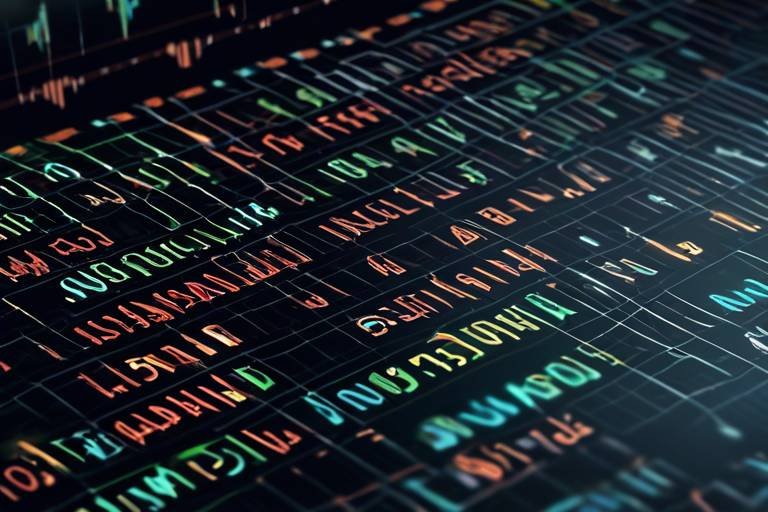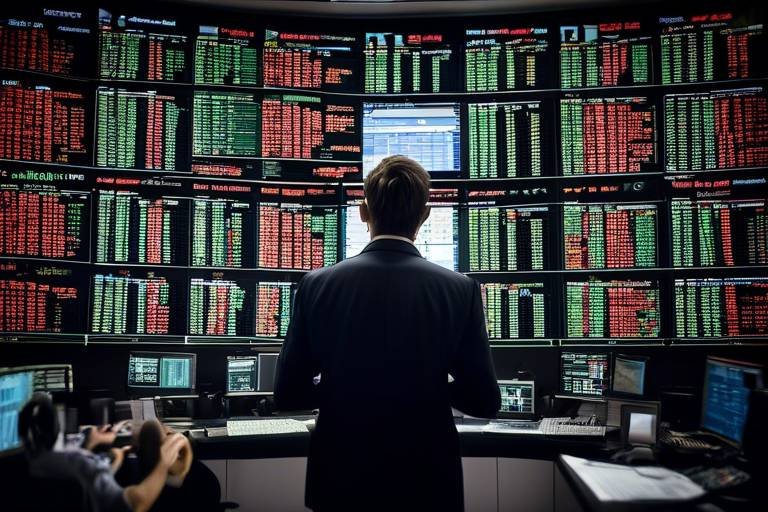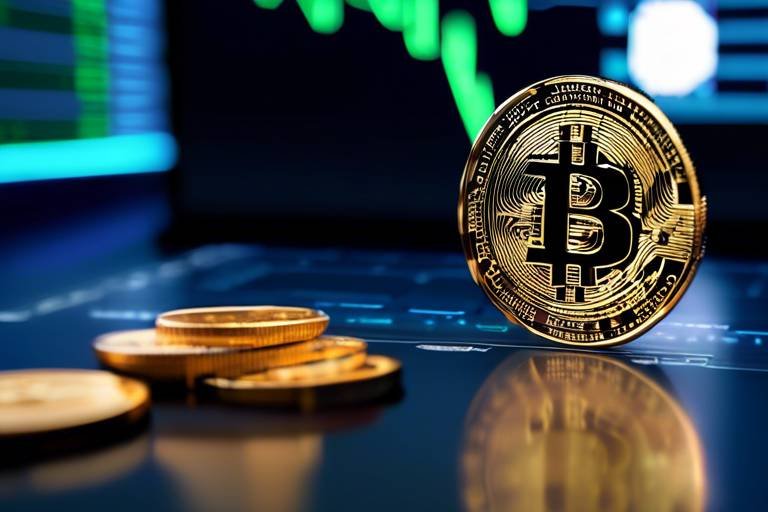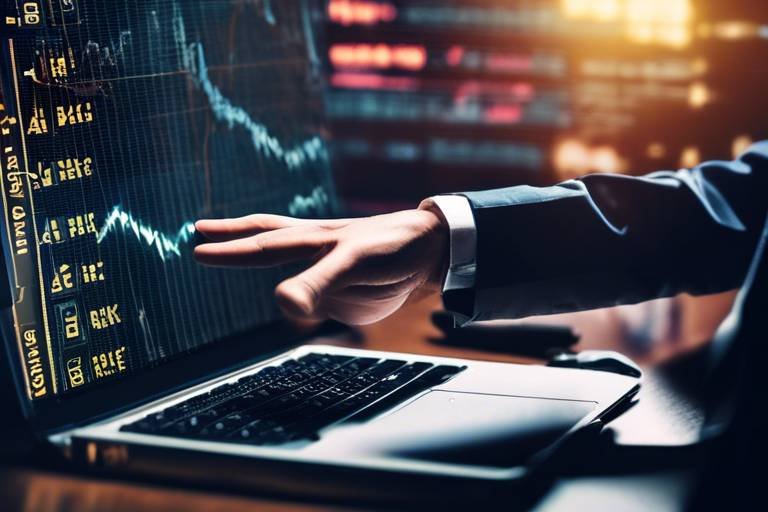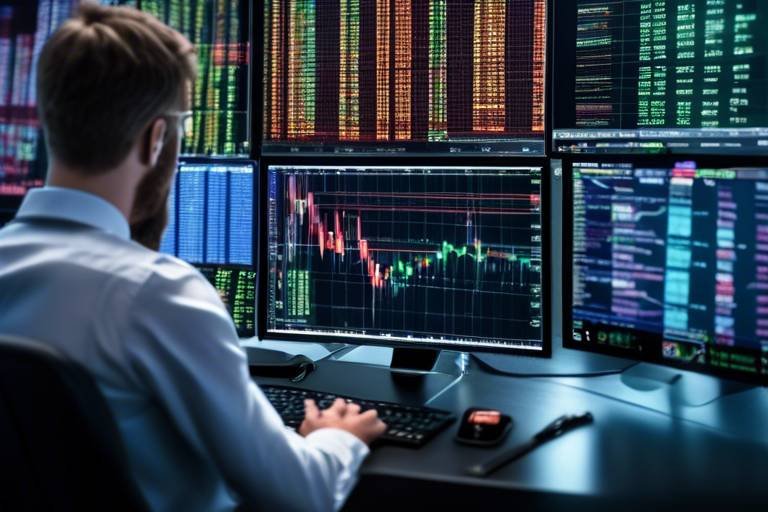Creating a 30-Day Crypto Trading Challenge
Are you ready to dive into the exciting world of cryptocurrency trading? If so, you've come to the right place! This article outlines a structured 30-day challenge designed to enhance your crypto trading skills and transform you into a more proficient trader. Think of it as a boot camp for your trading prowess. Over the next month, you'll engage in daily tasks, explore various strategies, and reflect on your progress, all while having a bit of fun along the way.
Imagine waking up each day with a clear purpose, knowing exactly what you need to accomplish to level up your trading game. That's the essence of this challenge! By committing to this month-long journey, you'll not only learn the ins and outs of trading but also develop the discipline and mindset necessary for long-term success. So, buckle up, and let's get started on this thrilling adventure!
Throughout this article, we'll break down each aspect of the challenge, from understanding the basics of crypto trading to setting realistic goals, creating a personalized trading plan, and tracking your progress. We'll also delve into the emotional and psychological aspects of trading, helping you build resilience against the inevitable ups and downs of the market.
But wait, there's more! This challenge isn't just about learning; it's also about action. Each day, you'll have specific tasks designed to improve your skills and reinforce your knowledge. Whether you're a complete newbie or someone with a bit of experience, this challenge will cater to all levels of traders.
As we journey through the next 30 days, remember that the key to success lies in consistency and reflection. At the end of the challenge, you'll have the opportunity to evaluate your progress, celebrate your achievements, and plan your next steps in the vast world of crypto trading.
So, are you ready to take the plunge? Let's embark on this 30-day crypto trading challenge together and unlock the potential that lies within you!
- What is the purpose of the 30-day crypto trading challenge?
The challenge aims to enhance your trading skills through structured daily tasks and reflections. - Do I need prior experience in trading?
No, this challenge is designed for traders of all levels, from beginners to more experienced individuals. - How much time should I dedicate each day?
While it varies per task, aim for at least 30 minutes to an hour daily to fully engage in the challenge. - What if I make mistakes during the challenge?
Mistakes are part of the learning process! The challenge encourages you to analyze errors and learn from them.

Understanding Crypto Trading Basics
Before you embark on your thrilling journey into the world of cryptocurrency trading, it’s crucial to grasp the fundamentals. Think of it as learning the ropes before you dive into the deep end of the pool. Crypto trading isn’t just about buying and selling; it’s a nuanced dance that requires understanding key terms, market dynamics, and the platforms that facilitate these transactions. So, let’s break it down!
First and foremost, familiarize yourself with some essential terms. Here are a few you’ll encounter frequently:
- Bitcoin (BTC): The first and most well-known cryptocurrency, often seen as a benchmark for the market.
- Altcoins: Any cryptocurrency other than Bitcoin, such as Ethereum (ETH), Ripple (XRP), and Litecoin (LTC).
- Market Cap: The total value of a cryptocurrency, calculated by multiplying the current price by the total supply.
- Volatility: The degree of variation in a trading price series over time, often leading to rapid price changes in the crypto market.
- Exchange: A platform where you can buy, sell, or trade cryptocurrencies.
Understanding these terms is just the beginning. Next, you need to get a feel for the market dynamics. The crypto market operates 24/7, unlike traditional stock markets, which means that opportunities (and risks) can arise at any hour. Prices can swing wildly based on various factors, including market sentiment, news events, and regulatory changes. For instance, a tweet from a prominent figure can send prices soaring or crashing in minutes. This volatility can be both exciting and terrifying, making it essential to stay informed and alert.
Now, let’s talk about trading platforms. These are the tools that will allow you to execute trades and manage your portfolio. There are numerous exchanges available, each with its own features, fees, and security measures. Some of the most popular include:
| Exchange | Fees | Security Features |
|---|---|---|
| Coinbase | Varies (approx. 0.5% - 4%) | 2FA, insurance on custodial assets |
| Binance | 0.1% trading fee | Cold storage, 2FA |
| Kraken | 0.16% - 0.26% | Cold storage, 2FA |
Choosing the right platform can significantly impact your trading experience. Look for user-friendly interfaces, robust security measures, and low transaction fees. Once you’ve settled on a platform, it’s time to explore its tools and features. Most exchanges offer various trading options, including spot trading, margin trading, and futures trading. Each comes with its own risk and reward profile, so understanding them is key to making informed decisions.
Finally, remember that knowledge is power. The crypto landscape is constantly evolving, with new projects and technologies emerging all the time. Stay updated by following reputable news sources, joining online communities, and participating in forums. Engaging with other traders can provide invaluable insights and help you navigate the complexities of crypto trading.
In conclusion, understanding the basics of crypto trading is your first step towards becoming a proficient trader. It’s a thrilling ride filled with opportunities and challenges, but with the right knowledge and tools, you can navigate this exciting world with confidence. So, buckle up and get ready to dive deeper into the next stages of your 30-day challenge!
Q: What is cryptocurrency trading?
A: Cryptocurrency trading involves buying, selling, or exchanging cryptocurrencies on various platforms, aiming to profit from price fluctuations.
Q: How do I start trading cryptocurrency?
A: To start trading, choose a reputable exchange, create an account, deposit funds, and begin trading by buying or selling cryptocurrencies based on your research.
Q: Is crypto trading risky?
A: Yes, crypto trading can be highly volatile and risky. It's essential to understand the market and manage your risks effectively.
Q: Can I trade cryptocurrencies for free?
A: Most exchanges charge fees for trades, but some offer promotions or fee-free trading options. Always check the fee structure before trading.

Setting Realistic Goals
When it comes to trading in the volatile world of cryptocurrencies, setting realistic goals is not just a good idea; it's a necessity. Imagine embarking on a road trip without a map—you might end up lost, frustrated, and nowhere near your desired destination. Similarly, without clear goals, your trading journey can easily veer off course. So, how do you define these goals effectively?
First off, it's crucial to understand that your goals should be SMART: Specific, Measurable, Achievable, Relevant, and Time-bound. This framework acts as a compass, guiding you through the ups and downs of crypto trading. For instance, instead of saying, "I want to make money," a SMART goal would be, "I want to achieve a 10% return on my investment within the next month." This specificity not only provides clarity but also sets a tangible target to aim for.
Next, consider your risk tolerance. Trading can be exhilarating, but it also comes with its fair share of risks. Setting goals that align with your risk appetite is essential. If you're someone who prefers a more conservative approach, aiming for smaller, consistent gains might be more suitable than chasing after high-risk, high-reward scenarios. On the other hand, if you’re willing to take risks, your goals might involve larger percentages. Always remember, trading is not just about making money; it’s also about managing risks.
Another important aspect of goal-setting is to break your larger goals into smaller, more manageable tasks. Think of it like climbing a mountain. You wouldn’t attempt to reach the summit in one giant leap; instead, you’d tackle it step by step. For example, your larger goal could be to become a proficient trader within six months, while your smaller, short-term goals might include:
- Learning about different trading strategies.
- Practicing with a demo account for two weeks.
- Completing a trading journal to analyze your trades.
These smaller tasks not only make your journey less overwhelming but also allow you to celebrate small victories along the way. Each completed task is like a little badge of honor, boosting your confidence and motivation.
Finally, don't forget to review and adjust your goals regularly. The crypto market is ever-changing, and what seemed like a realistic goal last month might not be applicable today. By reviewing your progress weekly or bi-weekly, you can determine if your goals are still aligned with your trading journey. If you find that a goal is too ambitious or not challenging enough, don’t hesitate to tweak it. Flexibility is key in this fast-paced environment.
In summary, setting realistic goals is an essential part of your 30-day crypto trading challenge. By following the SMART criteria, aligning your goals with your risk tolerance, breaking them down into manageable tasks, and being open to adjustments, you’ll not only enhance your trading skills but also build a solid foundation for long-term success in the crypto space. So, grab your trading journal and start mapping out those goals today!
Q: How often should I review my trading goals?
A: It's recommended to review your goals at least once every two weeks to ensure they remain relevant and achievable.
Q: What if I don’t achieve my goals?
A: Don’t be discouraged! Use it as a learning opportunity. Analyze what went wrong and adjust your strategy accordingly.
Q: Can I change my goals during the challenge?
A: Absolutely! Flexibility is vital in trading. If you find your goals are no longer suitable, feel free to modify them.

Creating a Trading Plan
When it comes to crypto trading, having a well-structured trading plan is akin to having a map before embarking on a journey. Imagine setting off on a road trip without any idea of your destination or the route to take; it would be chaotic, right? Similarly, a trading plan provides you with direction, helping you navigate the often turbulent waters of the cryptocurrency market.
So, what exactly should your trading plan include? First and foremost, it's essential to define your trading goals. Are you looking to make quick profits, or are you more interested in long-term investments? By establishing clear objectives, you can tailor your strategies accordingly. For instance, if your goal is to achieve a 20% return within the next three months, your approach will differ significantly from someone aiming for steady growth over several years.
Next, let’s talk about risk management. This is a crucial component of your trading plan. You wouldn’t drive a car without wearing a seatbelt, right? Similarly, you need to protect your investment. Determine how much capital you’re willing to risk on each trade. A common rule of thumb is to risk no more than 1-2% of your total trading capital on a single trade. This way, even if things go south, you’ll have enough buffer to stay in the game.
Now, let’s dive into the nitty-gritty of entry and exit points. This is where your trading strategy comes into play. You’ll want to analyze market trends, historical data, and indicators to identify optimal times to buy and sell. Consider creating a simple table to outline your criteria for entering and exiting trades:
| Criteria | Entry Point | Exit Point |
|---|---|---|
| Moving Average Crossover | When the short-term MA crosses above the long-term MA | When the short-term MA crosses below the long-term MA |
| RSI Indicator | When RSI < 30 (oversold) | When RSI > 70 (overbought) |
Furthermore, incorporating market analysis techniques into your trading plan can significantly enhance your decision-making process. Whether you prefer fundamental analysis, which focuses on the underlying value of cryptocurrencies, or technical analysis, which examines price movements and patterns, having a clear approach will help you stay disciplined and avoid impulsive decisions.
Lastly, remember that your trading plan is not set in stone. The crypto market is dynamic, and so should be your strategies. Regularly reviewing and adjusting your plan based on your experiences and market changes is vital. After all, even the best-laid plans require fine-tuning!
In summary, creating a robust trading plan involves defining your goals, managing risks, establishing entry and exit points, and employing market analysis techniques. By doing so, you'll not only enhance your trading skills but also build the confidence needed to navigate the exciting world of cryptocurrency.
- What is a trading plan? A trading plan is a comprehensive framework that outlines your trading goals, risk management strategies, and the methods you will use to enter and exit trades.
- Why is risk management important? Risk management is crucial as it helps protect your capital from significant losses and ensures you can continue trading in the long run.
- How often should I review my trading plan? It's advisable to review your trading plan regularly, especially after significant market changes or personal trading experiences.
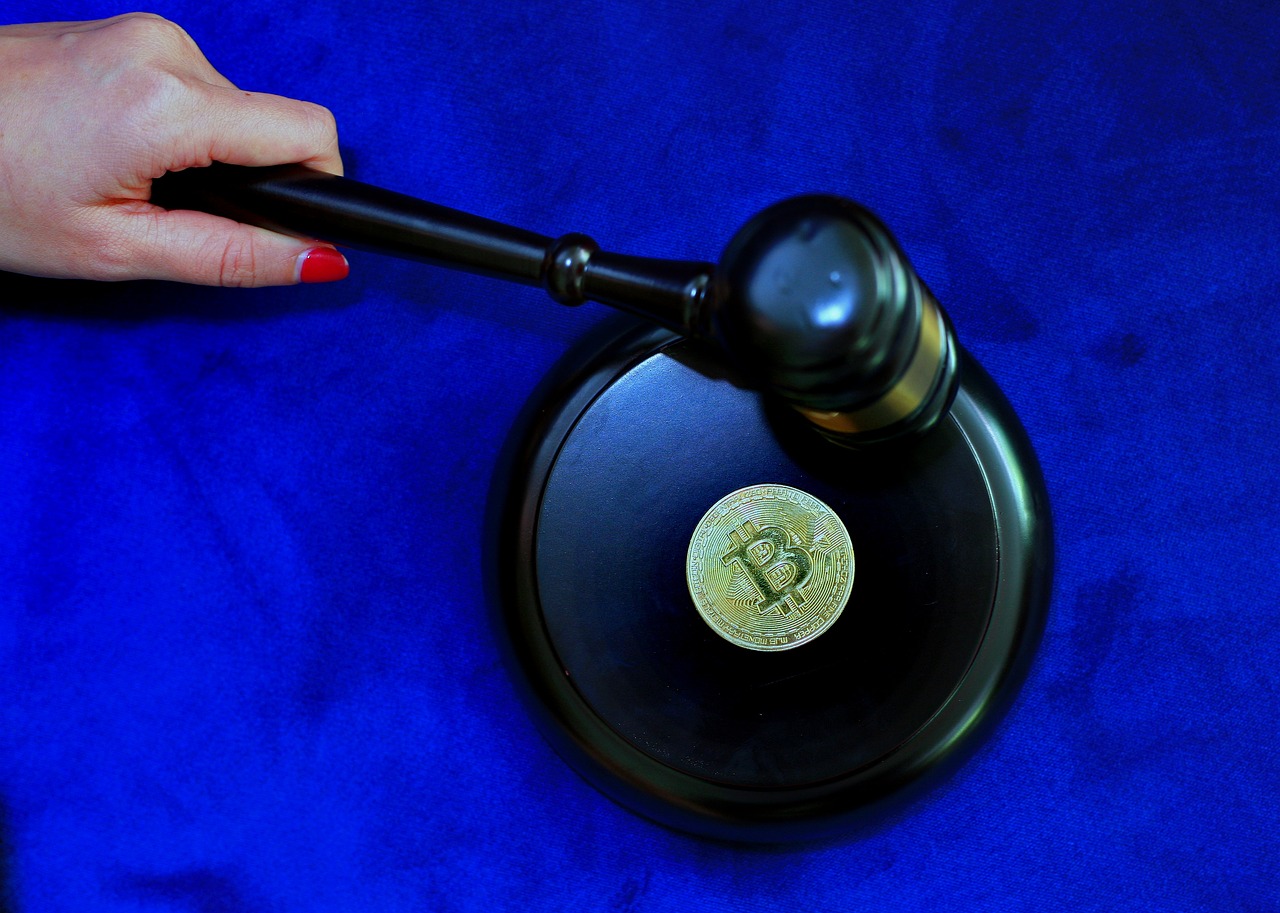
Daily Trading Tasks
Embarking on a 30-day crypto trading challenge is like setting sail on an adventurous journey. Each day brings new opportunities and tasks designed to sharpen your trading skills and boost your confidence. The key is to approach each task with curiosity and a willingness to learn. So, let’s dive into the daily trading tasks that will not only enhance your trading prowess but also keep you engaged throughout the challenge!
To kick things off, it’s essential to start your day with a market analysis. Spend the first 30 minutes reviewing the latest news and trends in the crypto world. This could involve checking out popular crypto news websites, following influential market analysts on social media, or even joining online forums. Understanding the market dynamics is crucial because, in the fast-paced world of crypto, information is power. You might find that a particular coin is gaining traction due to a new partnership or regulatory news, and this insight could inform your trading decisions.
Next, let’s talk about setting daily goals. Each day, you should outline what you want to achieve. This could range from executing a certain number of trades to achieving a specific percentage return on your investments. Writing these goals down not only makes them tangible but also holds you accountable. Imagine you’re a captain plotting your course on a map; without clear directions, you might drift aimlessly!
As you move through the day, it’s time to put your trading plan into action. This is where the rubber meets the road. Execute your trades based on the strategies you’ve developed. Remember, it’s not just about making a profit; it’s about applying your knowledge and refining your approach. Each trade should be a learning experience, whether it results in a win or a loss.
At the end of each trading session, it’s vital to conduct a post-trade analysis. This involves reviewing your trades to understand what went well and what didn’t. Ask yourself questions like: What was my thought process during the trade? Did I stick to my trading plan? What could I have done differently? Consider keeping a trading journal where you document your trades, thoughts, and feelings. This practice can be incredibly beneficial for recognizing patterns in your trading behavior over time.
To further enhance your learning, consider dedicating one day a week to backtesting your strategies. This means looking at past market data and simulating trades based on your strategies. It’s like a practice run for your trading plan without the financial risk. You can identify potential weaknesses in your approach and make necessary adjustments before putting real money on the line.
Finally, don’t forget to engage with the trading community. Join online groups or forums where you can share your experiences and learn from others. Discussing your daily tasks with fellow traders can provide new insights and perspectives that you might not have considered. Think of it as a team of explorers sharing their findings after a day of venturing into the wilderness. Collaboration can lead to unexpected discoveries!
To summarize, here’s a quick overview of the daily tasks that will guide you through your trading challenge:
| Day | Task |
|---|---|
| 1 | Market analysis and setting daily goals. |
| 2 | Executing trades based on your plan. |
| 3 | Post-trade analysis and journaling. |
| 4 | Backtesting your strategies. |
| 5 | Engaging with the trading community. |
By following these daily tasks, you’ll not only develop a deeper understanding of crypto trading but also cultivate the habits of a successful trader. Remember, every expert was once a beginner, and this challenge is your stepping stone to becoming proficient in the exciting world of cryptocurrency!
Q: How much time should I dedicate to trading each day?
A: Ideally, you should allocate at least 1-2 hours daily for market analysis, executing trades, and reviewing your performance. Consistency is key!
Q: What if I make mistakes during the challenge?
A: Mistakes are part of the learning process. Use them as opportunities to reflect and improve your strategies. Every error can lead to valuable insights!
Q: Can I participate in this challenge if I'm a complete beginner?
A: Absolutely! This challenge is designed for traders of all levels. Just be sure to take your time and don’t rush into trades without understanding the fundamentals.
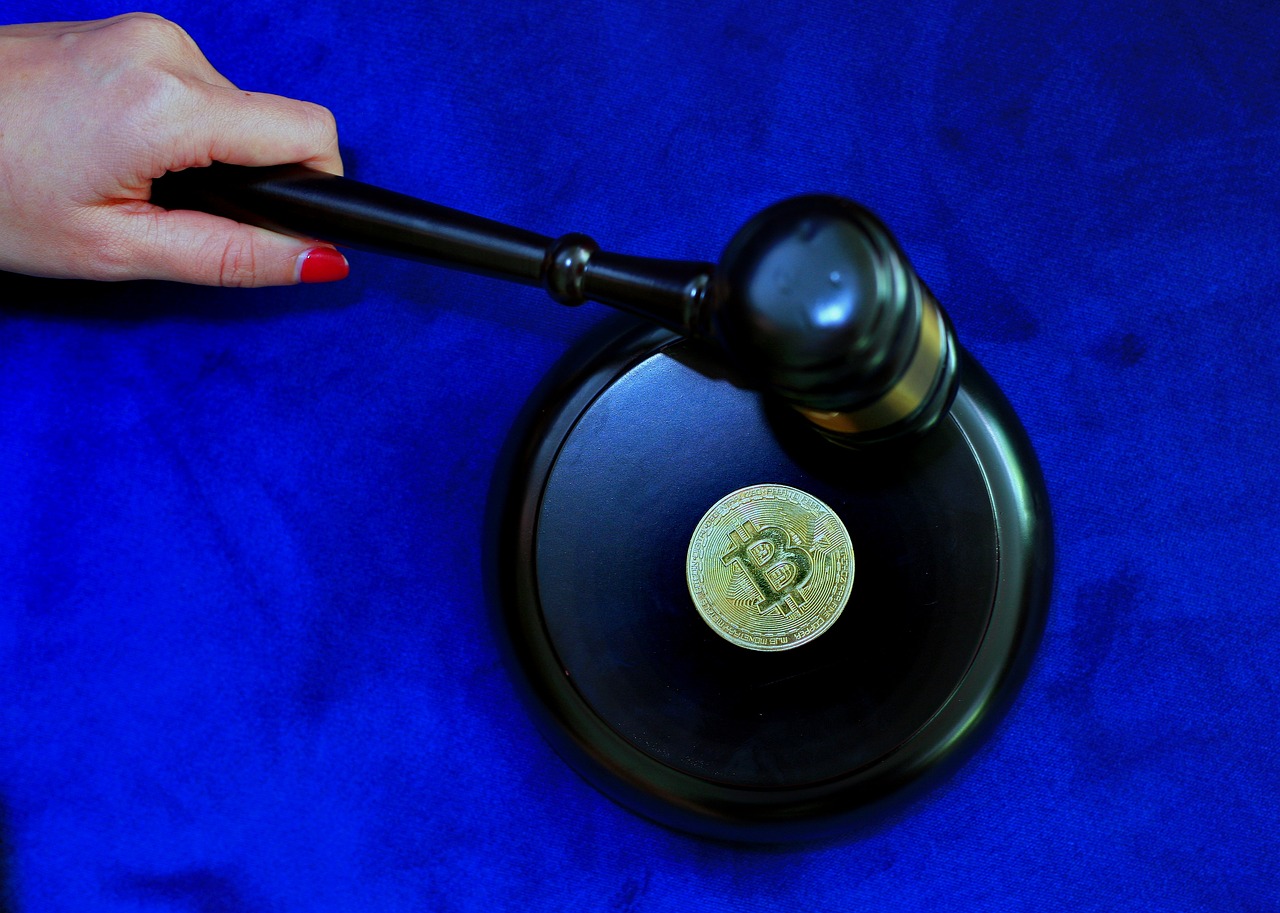
Tracking Your Progress
Tracking your progress during the 30-day crypto trading challenge is not just a good idea; it's essential for your growth as a trader. Think of it like a GPS for your trading journey—without it, you might find yourself lost in a sea of charts and numbers. By keeping a close eye on your performance, you can identify what strategies are working, which ones need tweaking, and how your emotional state affects your trading decisions.
To effectively track your progress, consider maintaining a trading journal. This journal should include details of every trade you make, such as the asset traded, entry and exit points, the rationale behind your decisions, and the outcome. You might be surprised at how much insight you can gain from reviewing your past trades. It’s like having a mirror that reflects not only your trading skills but also your emotional state during those trades.
In addition to a trading journal, utilizing various tools and platforms can enhance your tracking experience. Many traders find it beneficial to use spreadsheets for a more visual representation of their performance. You can create a simple table to log essential data, which might look something like this:
| Date | Asset | Entry Price | Exit Price | Profit/Loss | Notes |
|---|---|---|---|---|---|
| 2023-10-01 | Bitcoin | $40,000 | $42,000 | +$2,000 | Market was bullish |
| 2023-10-02 | Ethereum | $2,500 | $2,400 | -$100 | Overtraded on emotions |
As you fill out your journal and tables, you might want to focus on key performance indicators (KPIs) that matter to you. These could include:
- Win Rate: The percentage of profitable trades compared to total trades.
- Average Profit/Loss: The mean profit or loss from your trades.
- Risk/Reward Ratio: A measure of the potential reward for every dollar risked.
By analyzing these KPIs, you can spot trends over time. For instance, if you notice that your win rate is declining, it might be time to reassess your trading strategy or emotional triggers. Remember, the goal is not just to track numbers but to learn and adapt based on your findings.
Lastly, don't forget to celebrate your small victories! Tracking your progress should also involve recognizing the improvements you make along the way. Whether you nailed a trade or successfully managed your emotions during a downturn, acknowledging these moments can boost your morale and keep you motivated throughout the challenge.
Q: How often should I track my trades?
A: It's advisable to track your trades daily, especially during the challenge. This will help reinforce good habits and quickly identify any issues.
Q: What tools can I use for tracking?
A: You can use a simple spreadsheet, a dedicated trading journal app, or even pen and paper—whatever works best for you!
Q: Is it necessary to analyze my emotions?
A: Absolutely! Emotions play a significant role in trading. Understanding how you feel during trades can help you develop better strategies and improve your decision-making.

Emotional and Psychological Aspects
When it comes to crypto trading, the are just as important as the technical skills you develop. Imagine you're on a rollercoaster—every dip and rise can send your heart racing. That's how trading feels at times! The thrill of potential profits can be exhilarating, but the fear of losses can be paralyzing. Understanding and managing these emotions is key to becoming a successful trader.
First off, let's talk about fear and greed. These two emotions are often at the forefront of trading decisions. Fear can lead to hasty decisions, like selling a coin too early just because the price dipped a little. On the flip side, greed can make you hold on to a position for too long, hoping for that one last spike. Recognizing when these emotions are influencing your decisions can help you maintain a more balanced approach.
Another critical aspect is mental resilience. Trading can be a rollercoaster ride, and if you’re not mentally prepared, you might find yourself feeling overwhelmed. Just like an athlete trains their mind for competition, you need to train yours for trading. This can include practices such as meditation, journaling, or even just taking breaks to clear your head. A calm mind can make clearer decisions, which is vital in a fast-paced environment like crypto trading.
Moreover, developing a strong sense of discipline is crucial. You might have a trading plan, but if you stray from it due to emotional impulses, you could sabotage your success. Sticking to your plan, even when the market is volatile, requires a level of self-control that can be difficult to maintain. Setting clear rules for yourself, like stop-loss orders, can help you stay disciplined and avoid emotional trading.
It’s also important to have coping strategies in place for when things don’t go as planned. For instance, if you experience a significant loss, take a step back and assess the situation instead of jumping back in immediately. Reflecting on what went wrong can provide valuable insights for future trades. Remember, every trader makes mistakes; it’s how you learn from them that counts.
To help you navigate these emotional waters, consider keeping a trading journal. Document not just your trades but also your feelings at the time. This can help you identify patterns in your emotional responses and develop strategies to deal with them. For example, if you notice that you tend to panic sell after a certain percentage drop, you can create a plan to avoid that reaction in the future.
Finally, don’t underestimate the power of community. Engaging with fellow traders can provide both support and perspective. Whether through online forums, social media groups, or local meetups, sharing experiences can help you realize you’re not alone in your struggles. Plus, you might pick up some helpful tips along the way!
In summary, understanding the emotional and psychological aspects of trading is vital for long-term success. By recognizing your feelings, developing mental resilience, maintaining discipline, and learning from mistakes, you can navigate the ups and downs of crypto trading with greater confidence.
- How can I manage my emotions while trading? Start by developing a trading plan and sticking to it. Take breaks, practice mindfulness, and keep a trading journal.
- What should I do if I experience a significant loss? Reflect on the loss, analyze what went wrong, and avoid making impulsive decisions. Consider taking a break to regain perspective.
- Is it normal to feel anxious while trading? Yes, anxiety is a common emotion in trading. Learning to manage it through preparation and practice can help.

Learning from Mistakes
When it comes to trading, mistakes are not just inevitable; they are a crucial part of the learning process. Think of them as stepping stones on your path to becoming a more proficient trader. Each misstep can teach you invaluable lessons that no textbook or tutorial can provide. So, instead of shying away from your errors, embrace them! After all, every great trader has a story of failure that led to their success.
To effectively learn from your mistakes, it's essential to adopt a systematic approach. Start by keeping a detailed trading journal where you document each trade you make, including the rationale behind your decisions, the outcome, and your emotional state at the time. This practice not only helps you identify patterns in your trading behavior but also allows you to reflect on what went wrong. Here’s a simple structure for your journal:
| Date | Asset Traded | Entry Point | Exit Point | Outcome | Lessons Learned |
|---|---|---|---|---|---|
| 2023-10-01 | Bitcoin | $40,000 | $38,000 | Loss | Should have set a stop-loss to minimize losses. |
| 2023-10-02 | Ethereum | $2,800 | $3,000 | Profit | Followed my trading plan effectively. |
As you analyze your trades, look for recurring themes. Are you consistently overleveraging? Do you often exit trades too early or too late? Identifying these patterns can help you adjust your strategy moving forward. It’s like being a detective in your own trading saga, piecing together clues to solve the mystery of your trading performance.
Another effective method for learning from mistakes is to seek feedback from other traders. Engaging with a community, whether through online forums or local trading groups, can offer fresh perspectives on your trading style. You might discover that others have faced similar challenges and can share strategies that worked for them. Remember, trading doesn’t have to be a solitary journey. Sharing your experiences can lead to collective growth.
Finally, it’s important to maintain a positive mindset. Mistakes can feel discouraging, but they also represent opportunities for growth. Consider adopting a mantra such as, “Every mistake is a lesson.” This shift in perspective can empower you to approach trading with resilience. Instead of viewing a losing trade as a setback, see it as a chance to refine your strategy and enhance your skills.
In conclusion, the key to mastering crypto trading lies in your ability to learn from your mistakes. By documenting your trades, analyzing your performance, seeking feedback, and maintaining a positive mindset, you can turn each error into a stepping stone toward success. So, the next time you face a setback, remember that it’s not the mistake that defines you, but how you choose to learn and grow from it.
- How can I effectively track my trading mistakes? Keeping a trading journal is one of the best ways to track mistakes and analyze your performance.
- What should I include in my trading journal? Document the date, asset traded, entry and exit points, outcomes, and lessons learned.
- Is it normal to make mistakes in trading? Absolutely! Mistakes are part of the learning process and can lead to greater success.
- How can I maintain a positive mindset after a loss? Focus on the lessons learned and remind yourself that every trader faces challenges.

Reflecting on Your Journey
As you reach the end of your 30-Day Crypto Trading Challenge, it’s time to pause and take a good, hard look at your journey. Reflection is more than just a buzzword; it’s a crucial step in solidifying what you’ve learned and how you can apply it moving forward. Think of it like standing on a mountain peak after a long hike; you can finally see the entire landscape and appreciate the path you took to get there.
During this reflection phase, consider the various aspects of your trading experience. What were the highs and lows? Did you achieve the goals you set at the beginning? More importantly, how did you feel throughout the process? Were there moments of triumph when you made a successful trade, or were there times of despair when things didn’t go as planned? Embracing these emotions is essential because they can teach you valuable lessons about yourself and your trading style.
To help you navigate this reflective process, you might want to create a simple table to summarize your experience. Here’s a quick example of how you could structure it:
| Aspect | Reflection |
|---|---|
| Goals Achieved | List the specific goals you met. |
| Challenges Faced | Note down the major challenges and how you overcame them. |
| Lessons Learned | Highlight the key takeaways from your trading experiences. |
As you fill out this table, remember that it’s not just about the numbers. It’s about understanding your personal growth as a trader. Perhaps you discovered that you are more risk-averse than you initially thought, or maybe you found yourself thriving under pressure. These insights are gold when it comes to shaping your future trading strategy.
Another important aspect of reflection is to celebrate your achievements, no matter how small they may seem. Did you successfully execute a trade based on your analysis? Did you stick to your trading plan even when emotions ran high? Each of these victories deserves recognition. Celebrating these moments not only boosts your confidence but also reinforces positive behaviors that can lead to future success.
Lastly, think about your next steps. What will you carry forward from this challenge? Will you continue to refine your trading strategy based on what you’ve learned? Or perhaps you’ll dive deeper into specific areas, such as technical analysis or market research. Setting new goals based on your reflections can provide a clear path for your trading journey ahead.
- What should I do if I didn't meet my goals? Don't be discouraged! Use this as an opportunity to analyze what went wrong and adjust your strategy accordingly.
- How can I keep track of my progress after the challenge? Consider maintaining a trading journal where you can log your trades, emotions, and reflections regularly.
- Is it normal to feel overwhelmed during trading? Absolutely! Trading can be emotionally taxing. It's essential to develop coping strategies and take breaks when needed.
Frequently Asked Questions
-
What is the purpose of the 30-Day Crypto Trading Challenge?
The 30-Day Crypto Trading Challenge is designed to enhance your trading skills by providing a structured framework to practice daily. It helps you build confidence, learn new strategies, and develop a solid trading plan over the course of a month.
-
Do I need prior experience in crypto trading to participate?
No prior experience is required! This challenge is suitable for beginners and experienced traders alike. It starts with the basics and gradually introduces more complex concepts, making it accessible to everyone.
-
How can I set realistic goals for the challenge?
Setting realistic goals involves evaluating your current knowledge and skills. Think about what you want to achieve, whether it's understanding market trends or executing your first trade. Make sure your goals are specific, measurable, and achievable within the 30 days.
-
What should I include in my trading plan?
Your trading plan should encompass your risk management strategies, entry and exit points, and analysis techniques. It acts as your roadmap, guiding your decisions and helping you stay disciplined throughout the challenge.
-
How do I track my progress during the challenge?
You can track your progress by maintaining a trading journal, where you record each trade, the reasoning behind it, and its outcome. Additionally, consider using trading software or apps that provide analytics and performance metrics to help you evaluate your growth.
-
What are some coping strategies for emotional challenges in trading?
It's important to develop mental resilience in trading. Techniques such as mindfulness, setting strict trading rules, and taking breaks when feeling overwhelmed can help. Remember, it's okay to step back and reassess your approach when emotions run high.
-
How can I learn from my trading mistakes?
Learning from mistakes involves analyzing what went wrong and why. Document your errors in your trading journal, reflect on them, and adjust your strategies accordingly. This process is crucial for continuous improvement in your trading journey.
-
Why is reflection important at the end of the 30 days?
Reflection allows you to evaluate your progress, celebrate your achievements, and identify areas for further improvement. It helps you consolidate your learning and plan your next steps in the dynamic world of crypto trading.

